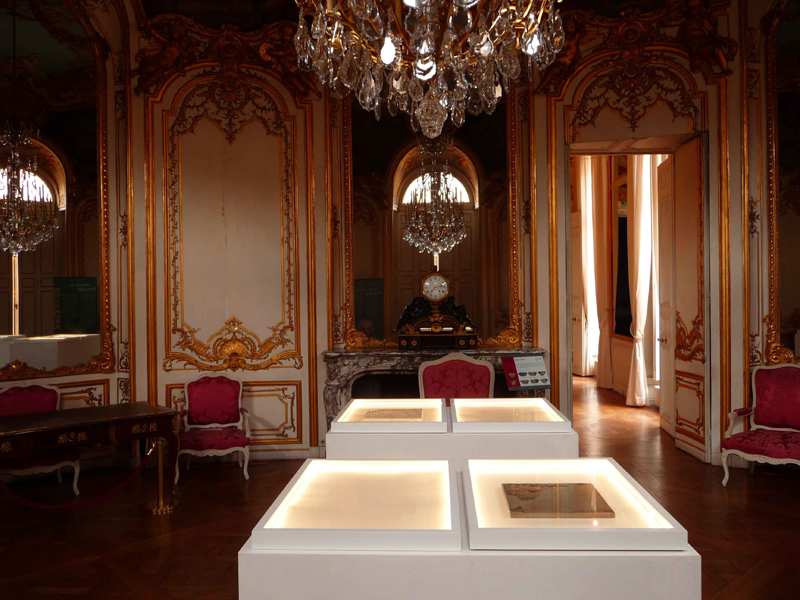MEGACONCRÉTO
The time which looks for a body.
For works of art as for human beings, if we do not have any available space to offer, the meeting does not happen. By far, concrete remains a bitter surface over which the prejudices stumble.
Complex, expensive, even thankless: concrete is scarcely used in Arts.
But, the one who has become an engineer, in order to leave at random only to leave to chance what happens to it, finds the strength and the sweetness to shock it. Sudden revelations of surprising mappings, of the most magic lightness and the most mysterious sweetness. […]
In this case, it can seem more reassuring - almost familiar - to follow the way of the CONCRETOGRAPHIES: a concrete slab is put into a press of a printer, and a unique embossed paper appears … And in spite of the subtlety of the print, the concrete slab keeps its prestige: its ghost, in hollow on the sheet, is not enough. The work is complete only in the closeness of the concrete slab with the paper marked with a written form arisen from chance and made by craters and furrows. The time crossed but the present always lasts, as the link of these two reliefs confirms it.
To tame the absence.
The paradox is that experiencing Guermont’s artwork requires an extreme presence but takes it immediately somewhere else. As if time, with its accumulated spirals concentrated in an instant, were in search of a body.
Sophie Radix
Curator of the Palais des Enfants and Exhibitions Programmator for the GrandPalaisRmn, 2013
Concrete body to body
A wet paper sheet is delicately deposited on a slab made of Craters Concrete, 2 meters in length. Then, they are put in an engraver's press.
The hand-to-hand fight is very intense.
The paper stretches to the extreme, tearing in certain places.
The concrete cracks, part of its skin remains hanging on to the paper.
The relief of the resultant monumental gauffrage is close to those of the concrete in negative. In addition to these translated embossed motifs, there also appears the crinkling of the paper and the concrete dust which is inlaid.
Switched on, the angular lighting system highlights the volume of the hollows and bumps of the paper; but switched off, the hues of grey draw a new preponderant landscape due to the concrete dust.
As surrounded by Alpine massifs or overhung by the infinite sky, we feel tiny in front of MEGACONCRETO (which is nevertheless very fragile).The architectural size and the cartographic nature of this gauffrage amplify our feeling of smallness.
CONCRETOGRAPHIES
Ddessin prize 2015
Every time we retain and recollect a memory, we modify it. Each CONCRETOGRAPHY works in dyptique.
The first part is a concrete slab placed on a paper sheet.
Its cratered surface testifies to my action on the concrete during its curing phase.
The second part is constituted only of the paper sheet, but its surface is embossed.
It is the impression of the concrete slab provoked by a press, as is for lithography.
Its relief is thus the concrete in negative, a translation distorted by my previous action.




